Venezuela’s currency has lost so much value that people simply throw away their small bills — they are virtually worthless anyway.
Enter Wilmer Rojas, 25, who scoops them up off the street, uses an origami-like folding technique, a needle and thread to make handbags with an eye to selling them — maybe even abroad, where people have real money.
Rojas can use as many as 800 bills to make such a purse. If you add up the face value of all that money, it is enough to buy only half a kilogram of rice. Rojas and his wife have three kids to feed, and another is on the way.
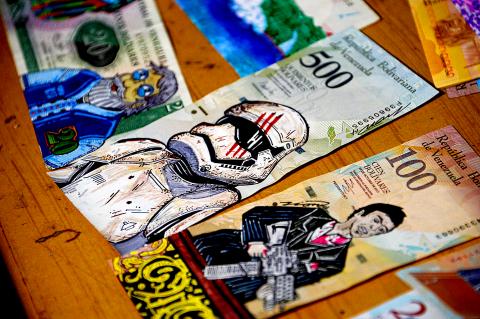
Photo :AFP
“People throw them away because they are no good to buy anything. No one even accepts them anymore,” Rojas told reporters outside a subway station, where he also sells coffee and cigarettes in addition to his unusual bag-weaving work.
Meanwhile, inflation in the oil-rich, cash-poor economy churns on and on: Since August last year, the bolivar has lost 87 percent of its value against the euro. Inflation this year is forecast by the IMF to come in at a staggering 13,000 percent.
With two, five and 10-bolivar notes, “you can’t even buy a piece of candy,” Rojas said, explaining how he used 400 such bills to make a smaller handbag.
Rojas then pointed to a queen’s crown he made out of bolivar notes.
“Here there are about 50,000 bolivars [US$2], which is maybe enough for a pack of cigarettes,” he said.
Rojas said he learned his craft from another makeshift artist.
“You can use magazine paper or newspaper pulp, but currency notes are better because they are not worth anything, they are all the same size and you don’t have to waste time cutting them,” Rojas said.
He hopes to start selling his creations soon, but he fears that Venezuela’s economic crisis might foil his plans.
“Here, people barely have enough to put food on the table and are not going to shell out money for something that required a lot of work,” he said.
In downtown Caracas, other hungry artisans are selling woven bags like these. They get as much as 300,000 bolivars for one of them. That would buy 1 kilogram of meat.
That Venezuela’s currency is being used as play money is the ultimate expression of how much value it has lost, economist Tamara Herrera said.
With 1,000 two-bolivar notes that nobody wants, Jose Leon, a 26-year-old designer, began a protest on Instagram in 2016 that featured doctored notes and the hashtag #venezueladevaluada, or devalued Venezuela.
Deadpool, the anti-hero in the Marvel comics, was the inspiration for his first work on currency notes, using his face to replace that of independence hero Simon Bolivar.
Leon has also drawn the faces of Star Wars characters over that of Bolivar and other famous Venezuelans pictured on the notes.
Leon’s customers live abroad and pay him up to US$20 per piece of “money art.”
“With a bit of Wite-Out and some pens, I can raise the value of the currency by nearly 5,000 percent,” Leon said at his workshop in San Cristobal, a city on Venezuela’s border with Colombia.
Leon is doing well with his art, but Rojas is still struggling to make money — in the meantime, he is using notes to make a carnival costume for his daughter.
“These things are no good for buying anything. At least I am putting them to good use rather than throwing them away,” Rojas said.
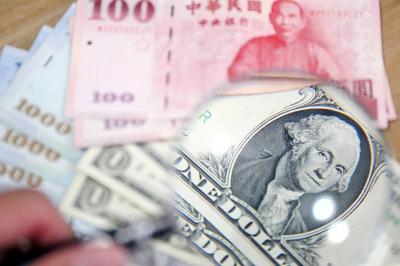
The US dollar was trading at NT$29.7 at 10am today on the Taipei Foreign Exchange, as the New Taiwan dollar gained NT$1.364 from the previous close last week. The NT dollar continued to rise today, after surging 3.07 percent on Friday. After opening at NT$30.91, the NT dollar gained more than NT$1 in just 15 minutes, briefly passing the NT$30 mark. Before the US Department of the Treasury's semi-annual currency report came out, expectations that the NT dollar would keep rising were already building. The NT dollar on Friday closed at NT$31.064, up by NT$0.953 — a 3.07 percent single-day gain. Today,
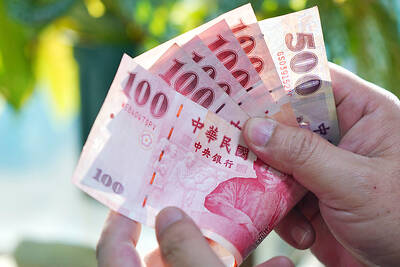
‘SHORT TERM’: The local currency would likely remain strong in the near term, driven by anticipated US trade pressure, capital inflows and expectations of a US Fed rate cut The US dollar is expected to fall below NT$30 in the near term, as traders anticipate increased pressure from Washington for Taiwan to allow the New Taiwan dollar to appreciate, Cathay United Bank (國泰世華銀行) chief economist Lin Chi-chao (林啟超) said. Following a sharp drop in the greenback against the NT dollar on Friday, Lin told the Central News Agency that the local currency is likely to remain strong in the short term, driven in part by market psychology surrounding anticipated US policy pressure. On Friday, the US dollar fell NT$0.953, or 3.07 percent, closing at NT$31.064 — its lowest level since Jan.
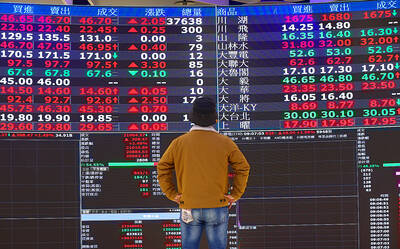
The New Taiwan dollar and Taiwanese stocks surged on signs that trade tensions between the world’s top two economies might start easing and as US tech earnings boosted the outlook of the nation’s semiconductor exports. The NT dollar strengthened as much as 3.8 percent versus the US dollar to 30.815, the biggest intraday gain since January 2011, closing at NT$31.064. The benchmark TAIEX jumped 2.73 percent to outperform the region’s equity gauges. Outlook for global trade improved after China said it is assessing possible trade talks with the US, providing a boost for the nation’s currency and shares. As the NT dollar
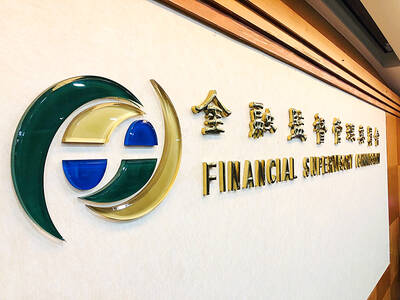
The Financial Supervisory Commission (FSC) yesterday met with some of the nation’s largest insurance companies as a skyrocketing New Taiwan dollar piles pressure on their hundreds of billions of dollars in US bond investments. The commission has asked some life insurance firms, among the biggest Asian holders of US debt, to discuss how the rapidly strengthening NT dollar has impacted their operations, people familiar with the matter said. The meeting took place as the NT dollar jumped as much as 5 percent yesterday, its biggest intraday gain in more than three decades. The local currency surged as exporters rushed to